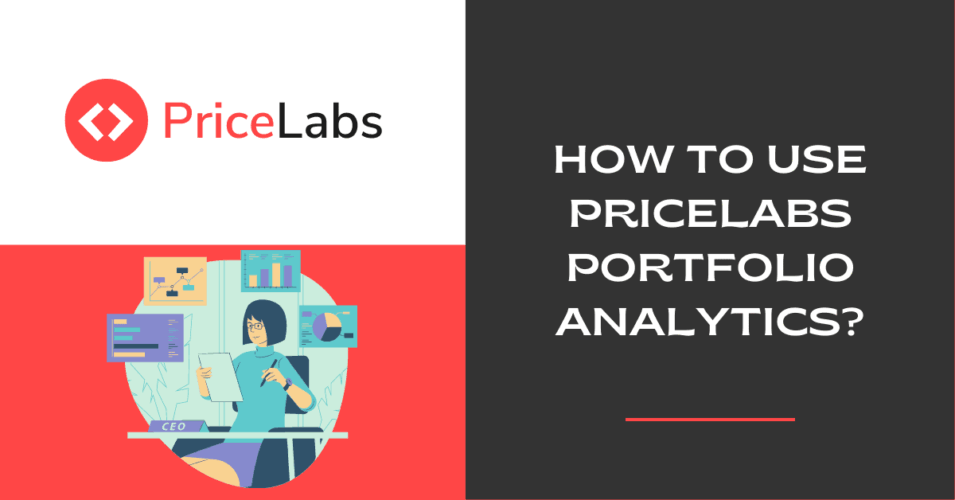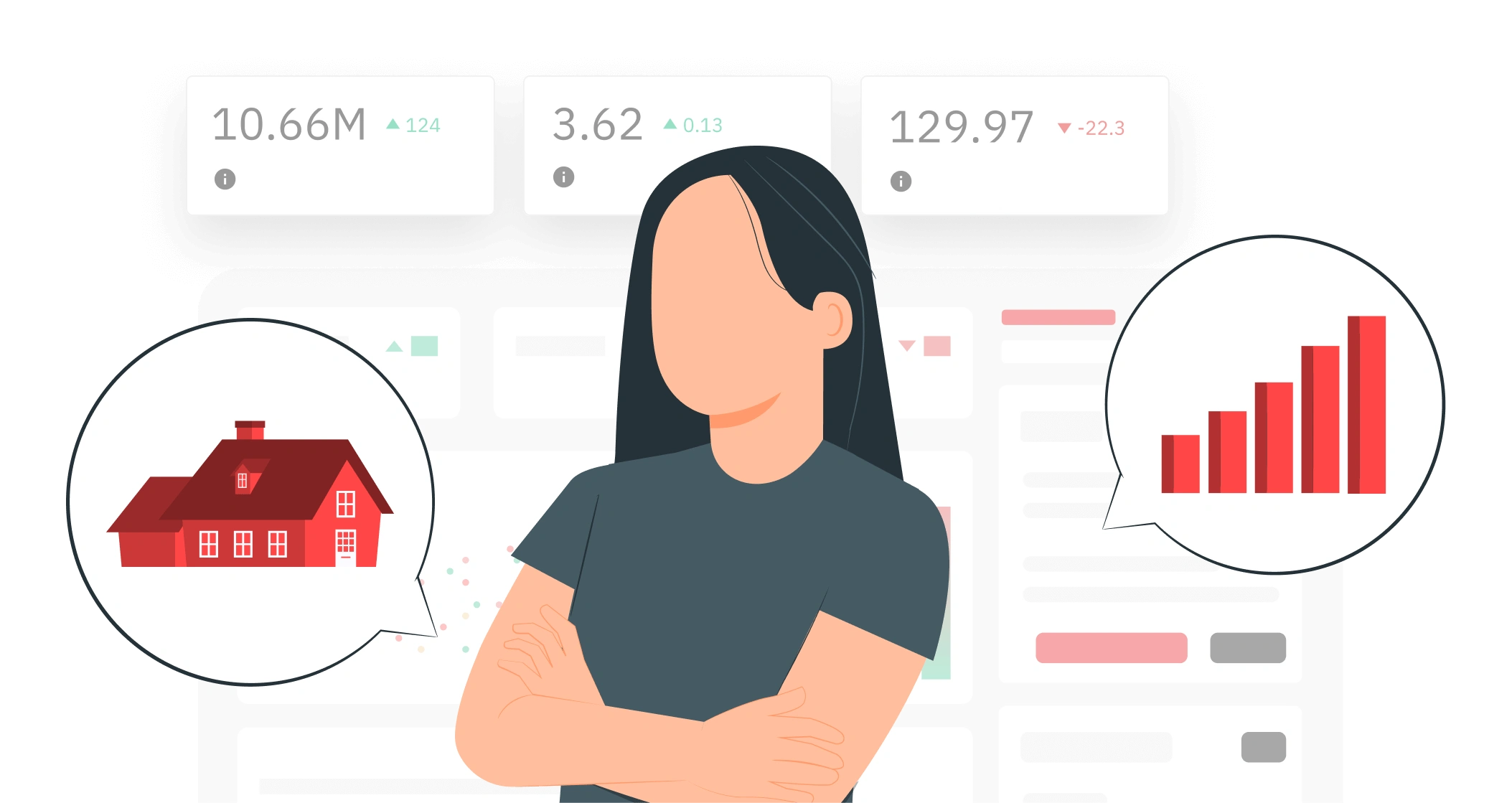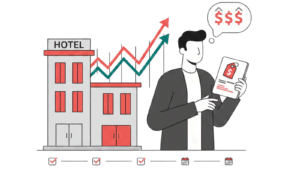Updated : Sep 10, 2025
In the ever-evolving landscape of the hospitality industry, hotel owners and managers face unprecedented challenges. From fluctuating market demands to increasing competition, making informed decisions has become more critical than ever. Enter portfolio analytics—a powerful tool that provides actionable insights for optimizing hotel performance and maximizing revenues. This blog explores how portfolio analytics for hotels can be a game-changer.
Understanding Portfolio Analytics in the Hotel Industry
Portfolio analytics involves the systematic analysis of a hotel’s complete asset portfolio to drive strategic decision-making. For hotels, this means looking beyond individual property performance to understand how each asset contributes to overall objectives. By leveraging data-driven insights, hotel owners and managers can make informed decisions that align with their broader business goals.
Why Portfolio Analytics Matters

1. Enhanced Revenue Management
By analyzing data across multiple properties, hotels can better understand demand patterns, pricing strategies, and occupancy rates. This allows for dynamic pricing adjustments that can lead to increased revenue.
For Example
Start by evaluating all revenue streams to understand which areas are most profitable. Use portfolio analytics to dissect income from room bookings, dining services, events, and other amenities. For instance, if your analytics reveal that weekend bookings are consistently higher, consider implementing special packages or promotions during weekdays to balance occupancy rates.
Steps
– Gather data on all revenue streams.
– Use portfolio analytics software to identify trends and patterns.
– Adjust pricing strategies and marketing efforts based on insights.
2. Cost Optimization
With a comprehensive view of all properties, hoteliers can identify areas where costs can be minimized without compromising quality or service.
For Example
Portfolio analytics can help you identify patterns in room occupancy, allowing for better inventory management. For example, if certain rooms or suites are frequently unoccupied, it might indicate a need for refurbishment or targeted marketing.
Steps
– Analyze booking trends over different periods.
– Adjust room rates dynamically using predictive analytics.
– Implement marketing strategies to target underperforming segments.
3. Investment Decisions
Portfolio analytics provides insights into which properties are underperforming and may need renovations or could be candidates for sale or repositioning. This strategic approach ensures that capital investments are directed towards assets with the highest potential returns.
For Example
Understanding guest preferences through portfolio analytics can significantly improve guest satisfaction. Analyze feedback and preferences to tailor services and create personalized experiences that encourage repeat visits.
Steps
– Collect data from guest feedback and reviews.
– Use portfolio analytics to find common themes and areas for improvement.
– Develop personalized service offerings based on analytic insights.
4. Risk Management
By evaluating performance metrics across properties, hotels can better understand potential risks and develop mitigation strategies to protect their assets.
For Example
Portfolio analytics enables you to scrutinize operational costs across various departments. By identifying inefficiencies, you can implement cost-saving measures without compromising quality.
Steps
– Break down costs associated with labor, supplies, and utilities.
– Use analytics to find areas where spending exceeds industry benchmarks.
– Implement strategies to minimize wastage and optimize resource allocation.
Transform your hospitality approach today
Discover actionable strategies tailored for small hotel owners and managers creating unforgettable stays for your guests & expanding revenues for your hotel!
Start your 30-day FREE trial now!Key Components of Portfolio Analytics
By delving into the key components of portfolio analytics, hoteliers can gain a comprehensive understanding of their operations and identify opportunities for growth and efficiency.
Data Integration
One of the foundational elements of effective portfolio analytics is data integration. This involves combining data from various sources such as property management systems, customer relationship management tools, and external market data.
For instance, integrating data from a hotel’s booking engine with social media sentiment analysis can reveal how marketing efforts are influencing booking behaviors. By consolidating this diverse range of data, hotels can perform comprehensive analyses that lead to more informed decisions. For example, if a hotel notices a spike in bookings following a social media campaign, it can attribute this success to specific marketing tactics and adjust future strategies accordingly.
Performance Metrics
Monitoring key performance indicators (KPIs) is essential in portfolio analytics. Metrics such as RevPAR (Revenue per Available Room), ADR (Average Daily Rate), and occupancy rates provide insight into a hotel’s operational health.
For example, if a hotel observes a decline in RevPAR compared to previous months, it might explore strategies like dynamic pricing or special promotions to boost revenue. Regularly tracking these KPIs enables hoteliers to respond swiftly to changes in market conditions and maintain competitive advantage.
Benchmarking
Benchmarking is another critical aspect of portfolio analytics that involves comparing a hotel’s performance against industry standards or competitors. By identifying areas where they lag behind industry averages or direct competitors, hotels can implement targeted improvements.
For instance, if a hotel’s occupancy rate falls short compared to similar properties in the area, it might analyze competitor pricing strategies or enhance its amenities to attract more guests.
Predictive Analysis
Predictive analysis leverages historical data to forecast future trends, allowing hoteliers to proactively adjust their strategies. By employing advanced statistical models and machine learning algorithms, hotels can anticipate changes in demand, optimize revenue strategies, and allocate resources more efficiently.
For example, during peak travel seasons, predictive analysis might indicate an increase in booking demand based on past patterns and upcoming events in the area. Armed with this knowledge, a hotel can adjust room rates accordingly or increase staff levels to ensure exceptional guest experiences.
Implementing Portfolio Analytics
Successfully implementing portfolio analytics requires a strategic approach:
Define objectives: Clearly outline what you aim to achieve with portfolio analytics—whether it’s improving revenues, enhancing customer satisfaction, or expanding market share.
Select appropriate tools: Choose analytics tools that integrate seamlessly with your existing systems and offer user-friendly interfaces.
Train Your Team: Ensure that your staff is trained in interpreting data insights and translating them into actionable strategies.
Continuous Monitoring and Adjustment: Regularly review analytics reports and adjust your strategies based on the insights gathered.
PriceLabs: Enhancing Portfolio Analytics for Hotels

As part of optimizing your portfolio analytics strategy, integrating dynamic pricing tools like PriceLabs can significantly enhance your efforts. PriceLabs offers tailored solutions specifically designed for the hospitality industry, providing pricing recommendations based on market data and demand forecasts.
By incorporating PriceLabs into your portfolio analytics strategy, you can:
– Achieve optimal pricing through automated algorithms that consider historical performance, competitor rates, and local events.
– Save time by reducing manual intervention and focusing on strategic decision-making.
– Increase revenue through data-driven pricing adjustments that capture maximum demand without leaving money on the table.
PriceLabs’ seamless integration with various property management systems ensures that your team benefits from streamlined operations without any disruptions—allowing you to focus on delivering exceptional guest experiences.
Way Forward
Leveraging portfolio analytics is not just an option—it’s a necessity for sustained success. By embracing this strategic approach, hotel owners and managers can optimize their assets’ performance while making informed decisions that position them ahead of the curve. With tools like PriceLabs complementing these efforts through dynamic pricing solutions tailored specifically for hotels, there has never been a better time to unlock new levels of revenues within your hotel portfolio. Embrace portfolio analytics today—your roadmap towards strategic growth awaits!
Frequently Asked Questions (FAQs)
1. What is portfolio analytics, and how can it benefit hotels?
Portfolio analytics involves the systematic analysis of a hotel’s various assets, from real estate holdings to operational efficiency. By leveraging portfolio analytics, hotels can gain insights into their performance metrics, identify underperforming assets, and make data-driven decisions. This not only optimizes resource allocation but also enhances revenues. In essence, portfolio analytics empowers hotel management to strategically manage their asset portfolio for maximum returns.
2. How does portfolio analytics differ from traditional financial analysis in the hotel industry?
Traditional financial analysis often focuses on historical financial statements, providing a retrospective view of performance. In contrast, portfolio analytics offers a more dynamic and forward-looking approach. It incorporates real-time data and predictive modeling to anticipate market trends and customer behavior. For hotels, this means that portfolio analytics can provide a holistic view of asset performance and operational metrics, enabling more proactive decision-making.
3. What tools are commonly used in portfolio analytics for hotels?
Several tools and technologies are employed in portfolio analytics to help hotels maximize their asset value. Advanced software solutions integrate data from various sources such as property management systems, customer databases, and market trends. These tools allow hoteliers to conduct comprehensive portfolio analyses by offering features like scenario planning, risk assessment, and forecasting. By utilizing these tools, hotels can ensure their portfolio analytics efforts are both efficient and effective in driving strategic growth.








